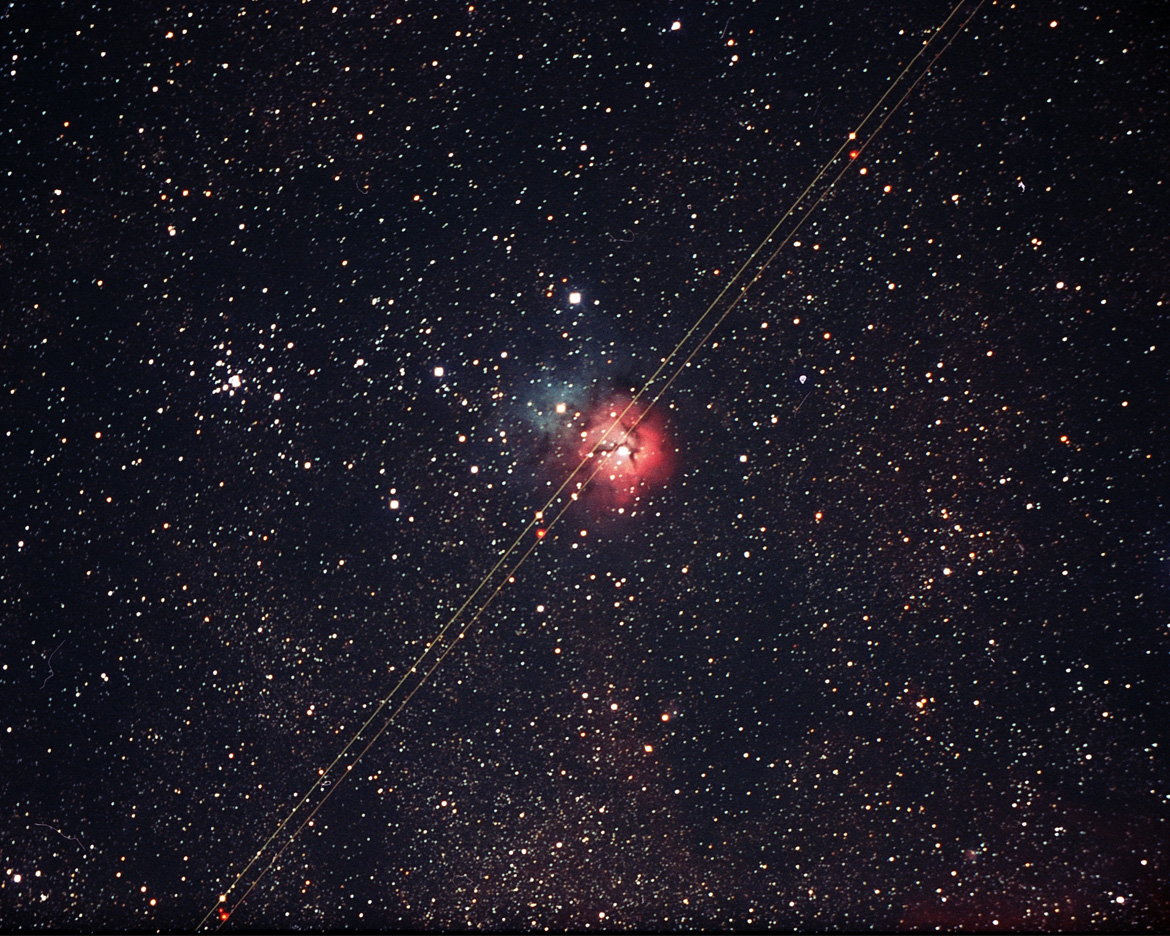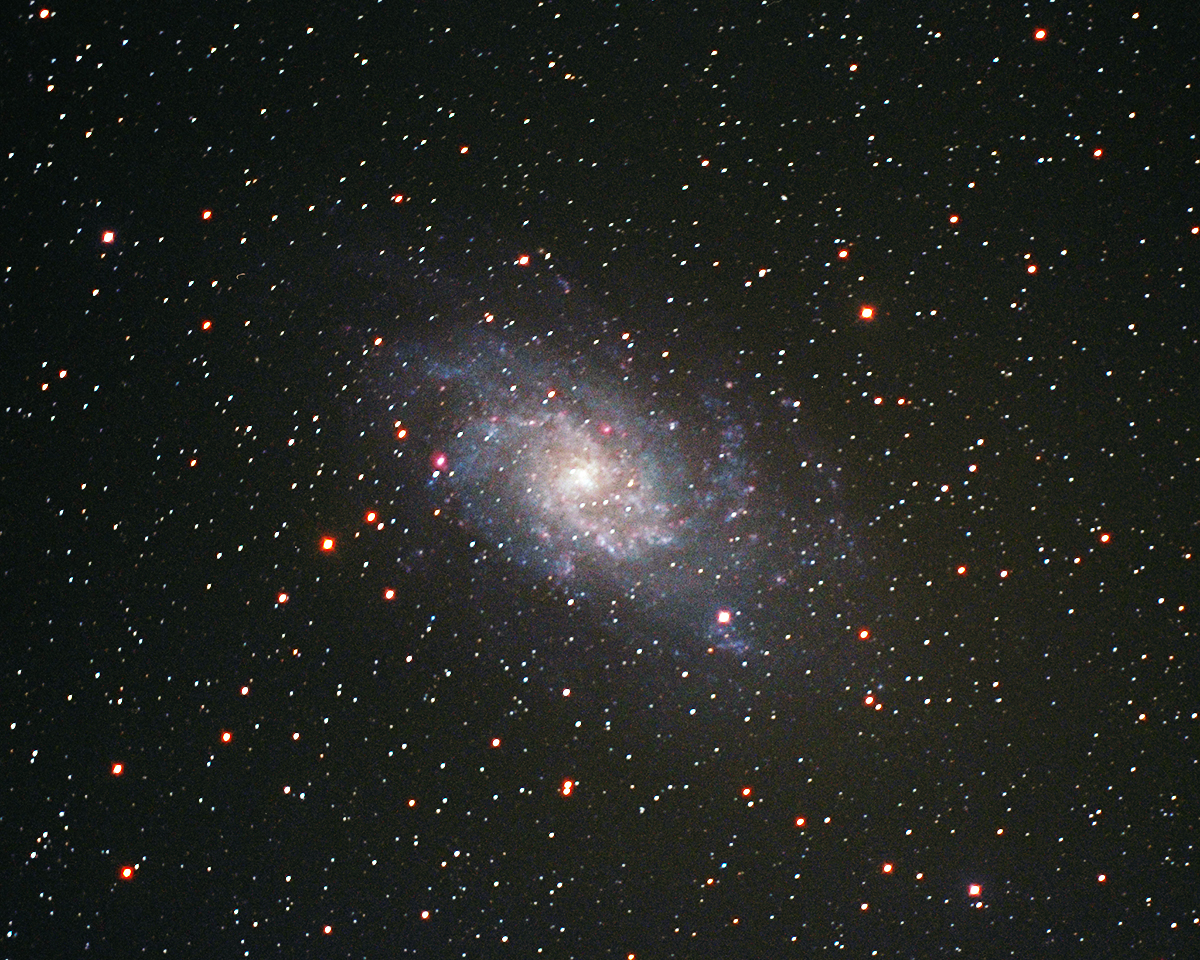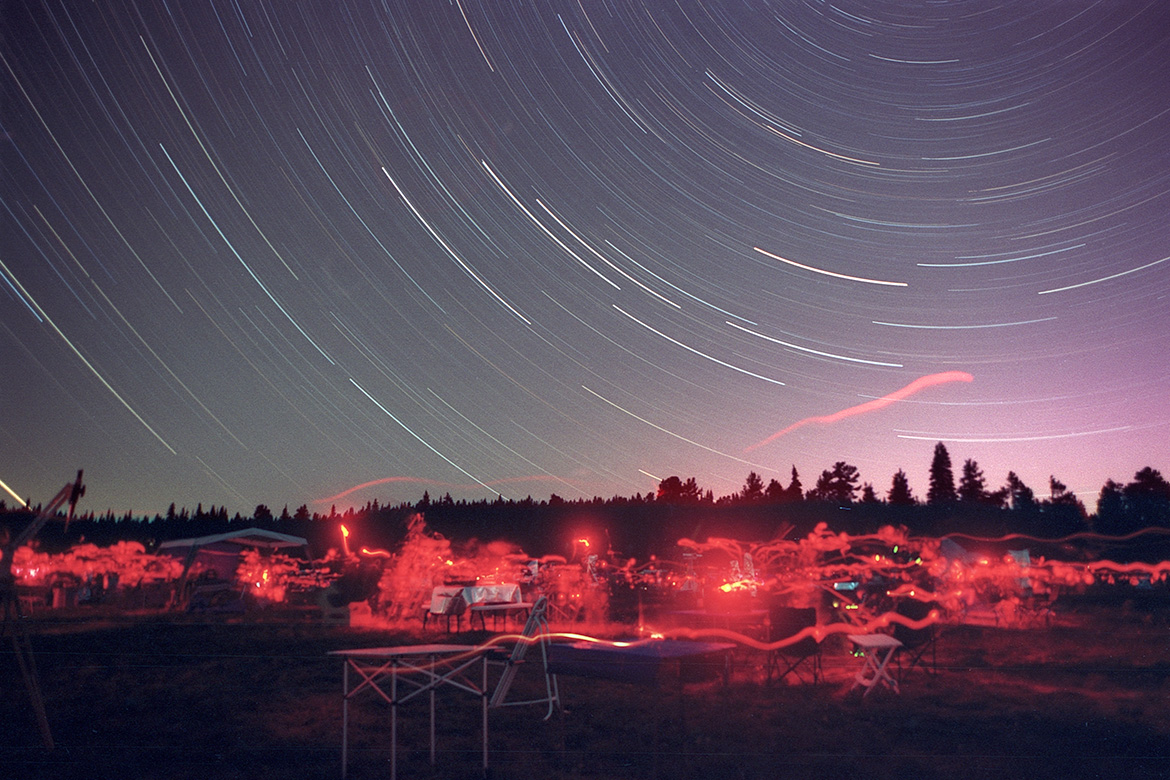
Most attendees had given up and gone to bed with the cloud cover at midnight. A few of us accidentally enjoyed its clearing after 2:00. We took in views of galaxies, nebulas and star clusters until the near-dawn when Saturn, and then Jupiter and Venus appeared. This was the intoxicating finale of the evening, and with the brightening sky, I staggered to my tent sometime after 4:00.
It is logical to think that one would then sleep until eight hours later, about noon, but in my experience, this never happens. I seem to have some sort of internal chemical clock that, after years of getting to school, and reporting to work, is conditioned to get me up and active long before midday.
So by 8:00 I was up again, now faced with the problem of the flat tire. I had several options. In such a large gathering, helpful resources abound, and I knew that I should take advantage of them before the end of the star party, when I expected everyone to evacuate in an urgent return to their jobs and real life. I received an offer from Bruce “Harpo” Berghoff, the other Minnesota Astronomical Society member who was attending (a coincidence, this really is rather remote for us), to drive me back to Ellensburg with my tire to get it repaired. This was a generous offer, knowing how far the town was and the nature of the road to get there. Harpo has a unique combination of interests that almost meshes in this environment. In the day, he likes to take on challenging trails on his mountain bike; at night he slows down to marvel at the sky with the rest of us. On this day, he had a mission to find a replacement part for his bike.
In the end however, I took the sage counsel of neighbor Barry, who thought that maybe I had a slow leak and if I could re-inflate the tire, I could get to Ellensburg and have it repaired. Barry had a 12-volt compressor, a noisy contraption that slowly, but inexorably, pumped air into my dead tire. And, as Barry predicted, the leak was slow enough that this method successfully re-inflated it, and more, it seemed to hold after disconnecting. I could now drive to town.
Great. I could now drive down that mountain road back to Ellensburg. I suspected that this would consume my day, and in fact, it did. Getting down was a problem. I made several wrong turns in the unmarked forest road system. Only later did I remember that my GPS unit on my dashboard which entertained me with current direction and speed had also recorded my trail the previous day. The electronic breadcrumbs showed clearly which turn I should make, but only after several miles of discovering dead-ends, did I figure this out. What good is a GPS if you don’t look at it?
In spite of this setback, I was able to find exactly the right place in Ellensburg and have my tire professionally repaired for a grand total of $8.00. I then found a place to have lunch and prepared myself for the trip back up the mountain.
On the way back, the road was becoming familiar. Of course, I could anticipate the route ahead of me since I was now looking at my GPS. Somehow this didn’t help. Did I mention that this was a serious mountain road? I got back to the top just in time for the afternoon rain.
This was a new experience. In all star parties I had previously attended, the arrival of bad weather was a signal to pack up and go home. In this case, telescopes had been set up with many complex, or heavy, hard-to-break-down support systems. The solution was to properly enshroud them during non-observing hours, protecting them from wind, dust, rain, and excessively inquisitive\passers-by. The telescope field was covered when I returned, but my own telescope was still exposed! I hastened to improvise a tarp wrap for it.
The clouds continued intermittently dropping moisture throughout the afternoon, ceasing by evening, occasionally thinning, creating great optimism, then closing in again. I went through my alignment and focus procedures again, as the openings permitted, thinking that I could at least accomplish these tasks and be ready when and if the clouds did clear.
Eventually they did, mostly, and the persevering among us had several long periods of clear dark skies. I managed to make several deep sky exposures, and then visit my new friends in the telescope field.

The open sky is not pitch black. It is actually a large diffuse light source, which illuminates the world at the very limit of human perception. You can see this most easily when you are dark-adapted and can hold your hand up against the sky. Your hand will be in deep silhouette; the sky will be light gray in appearance! It’s enough light to keep from stumbling (over even ground) and enough to find familiar shapes and people in a sea of telescopes and equipment.
Navigating the sea brings you past islands of nocturnal activity. It is an interesting experience. As you move around, there is a buzz of conversation in the dark. The tone is one of a controlled but urgent enthusiasm, overlapping verbal notes of the visual experience at the eyepiece, comparisons between telescopes, recollections of past views, advice and suggestions, and a large collection of expressions of awe. It’s odd, walking in the dark and hearing chatter all around; people not seeing each other but nevertheless communicating their love for the night sky.
Some areas of the sea are augmented by music. Somehow rock-and-roll, new-age, and classical all share the field without aural conflict. One fades to the next as you roam the ocean of sound.
The sea is red, illuminated by the dim LED flashlights used to read star charts and find focus knobs. The red light preserves your visual sensitivity while inspecting the faint fuzzies in the eyepiece. This is common knowledge among amateur astronomers but must seem strange to other visitors. Preserving night vision becomes an issue of courtesy, and finally of enforcement. Those who did not make it up the mountain by twilight were held at the gates further down the road. Vehicle headlights were a serious offense.
The red lights are everywhere, including the vendor tents that supply coffee to this army of insomniacs. Yes, there were two entrepreneurial businesses that saw a market for their product and brought it (somehow) to their consumers. For me, an avid caffeine ingestor, this was what every star party needs, an all-night espresso shop. There is a bit of java culture that goes with it that I’m not fully familiar with; however, on the advice of other consumers, I accepted the “natural additives” to enhance the already potent properties of espresso. I couldn’t really tell. It was a night to stay up for regardless.



Pingback: 2.2 Flat Tires, Cloudy Skies | Thor's Life-Notes
That’s still beautiful, Thor! Nice job!
Sent from my iPhone
>
Pingback: 2.4 Dinner and a Moonset | Thor's Life-Notes